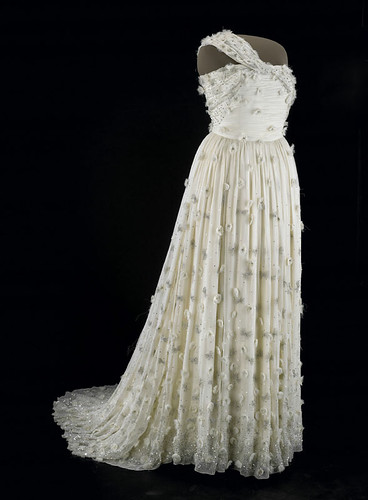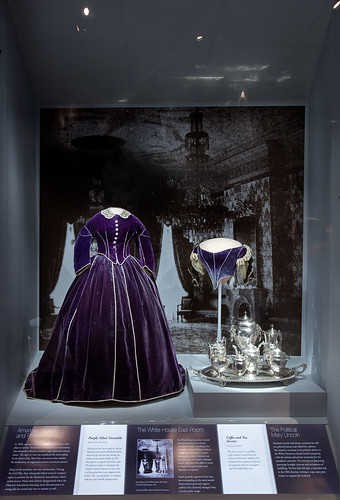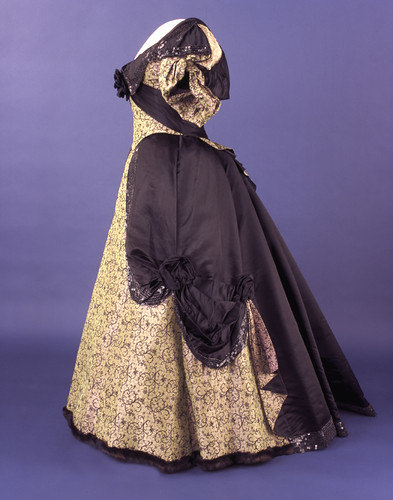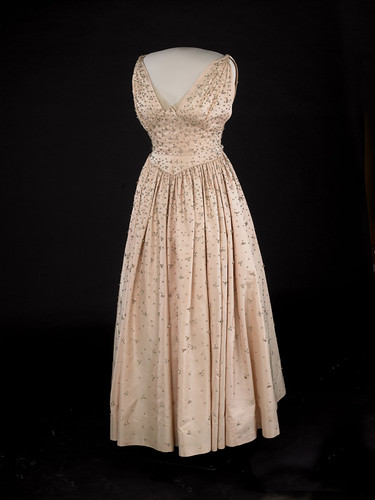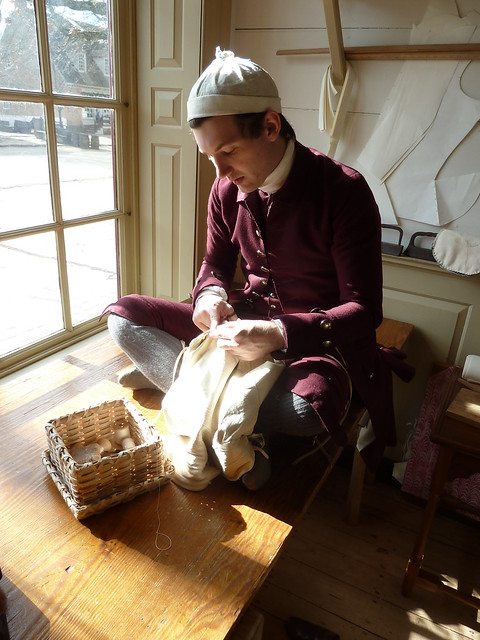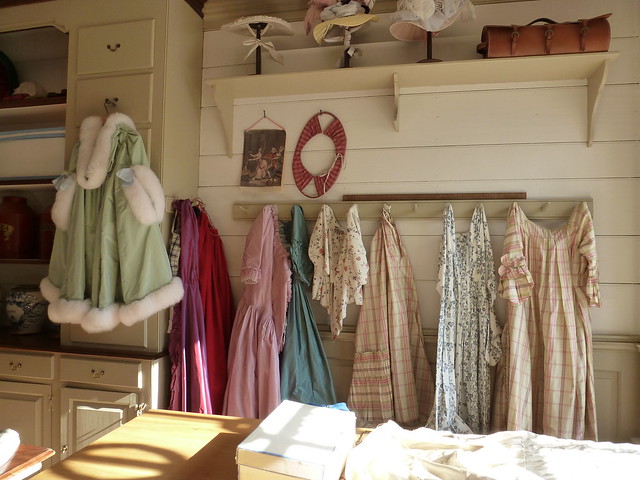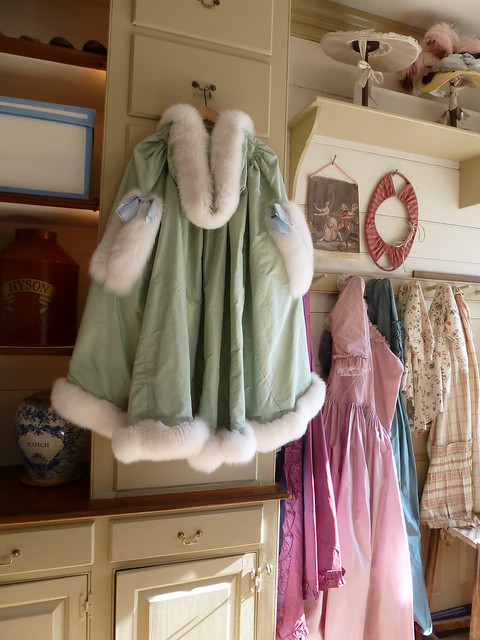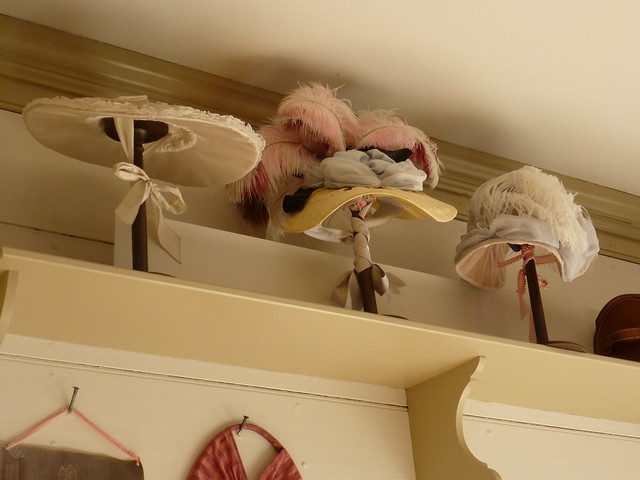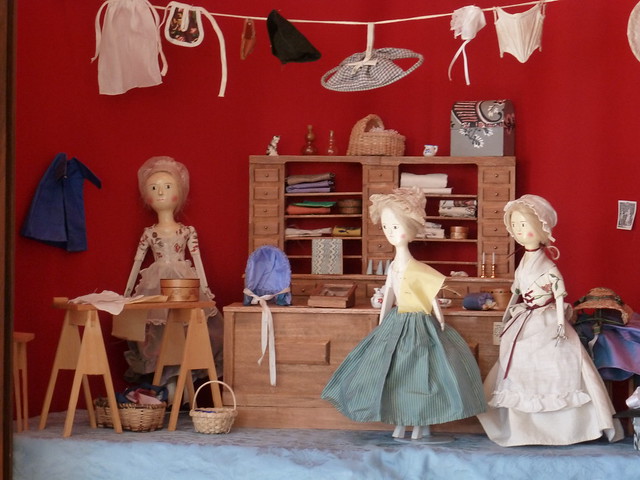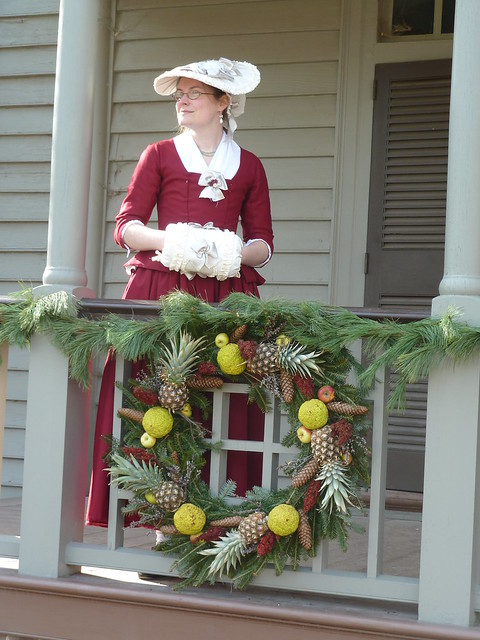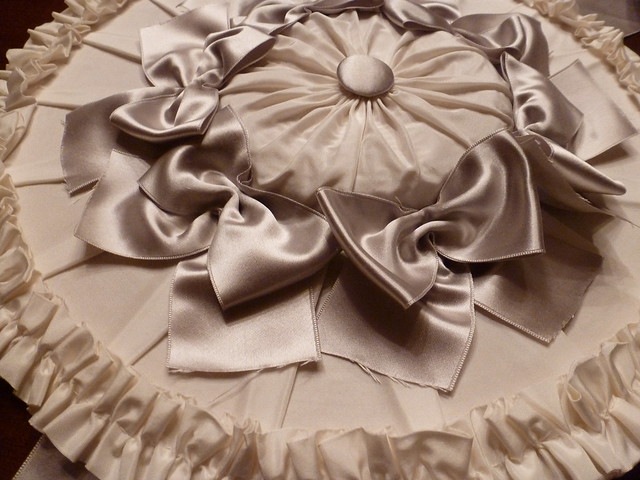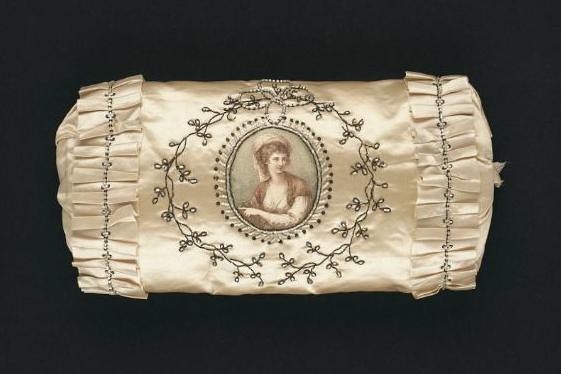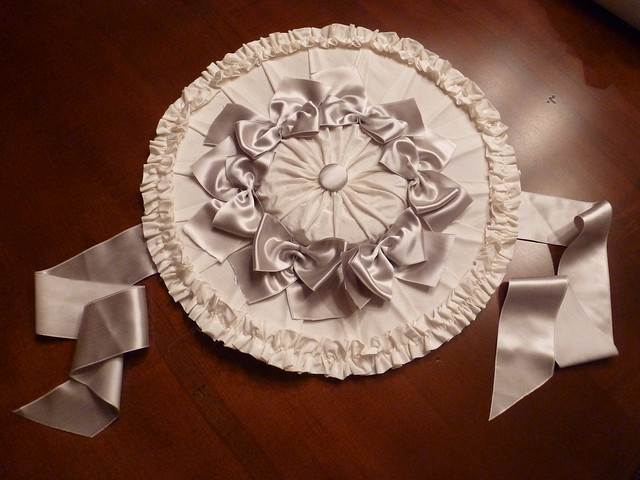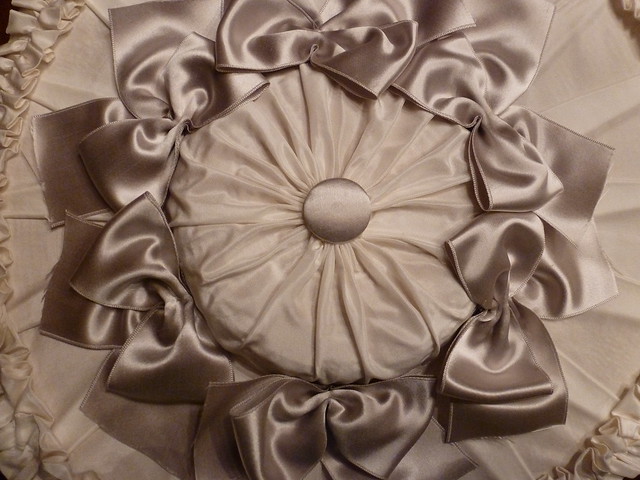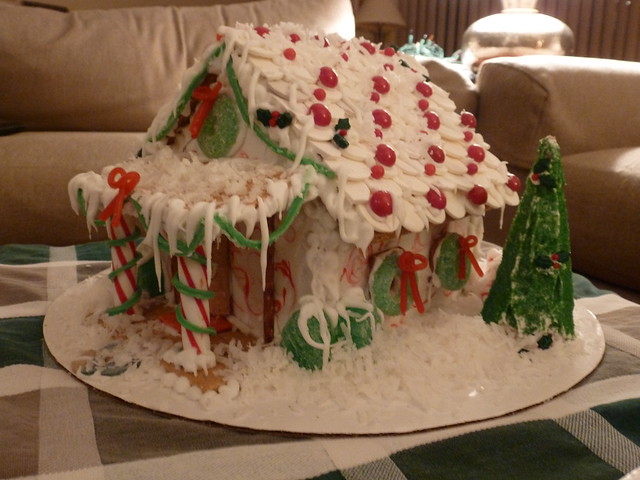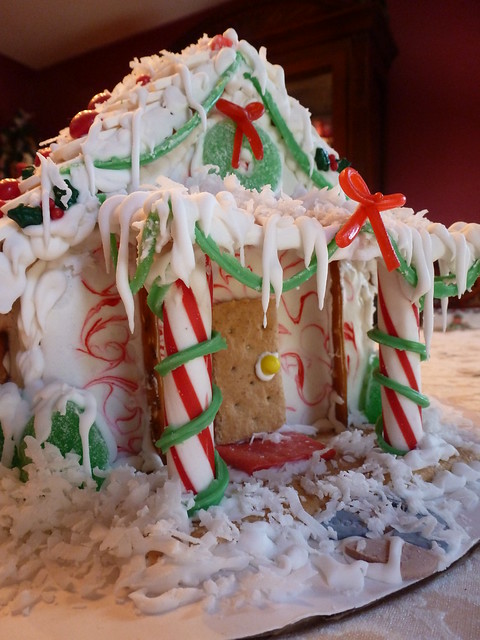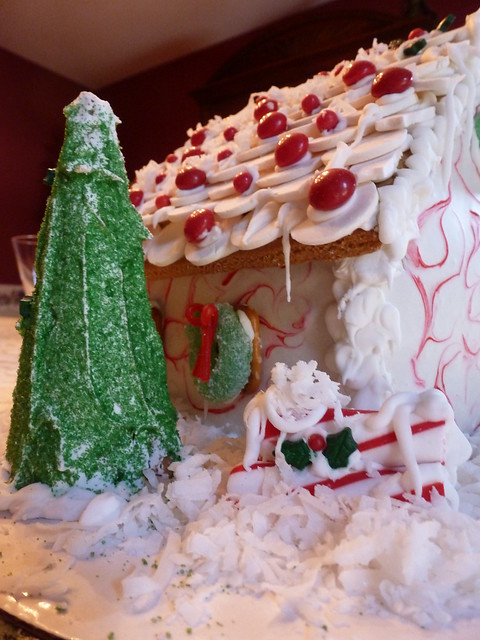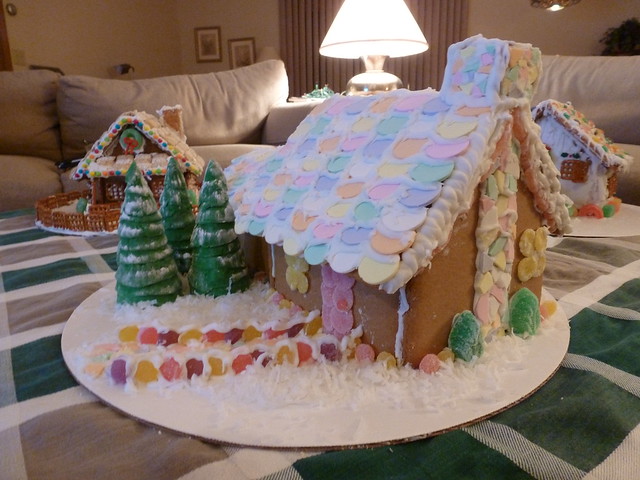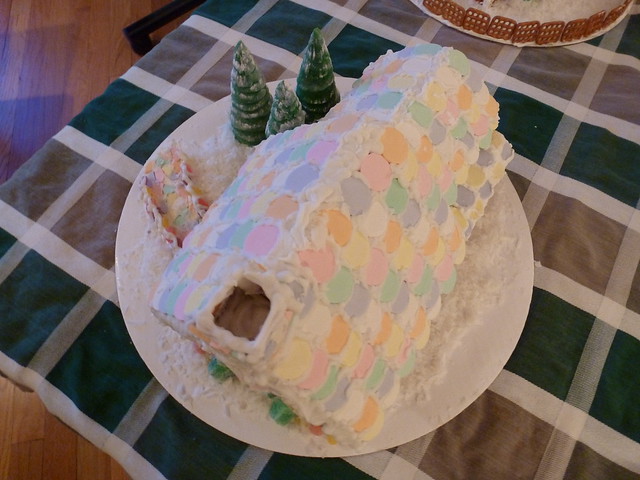Michelle Obama's 2009 inaugural ball gown.
Image linked from the National Museum of American History's flickr page.
In another interesting video from the Smithsonian, curator Lisa-Kathleen Graddy shows us some additional behind-the-scenes footage (from an earlier version of this exhibit, from what I can tell) and also shares some interesting stories about the history of a handful of these gowns. Mary Todd Lincoln's 1861 silk taffeta gown with woven black stripes and purple flowers is one of my favorites, and I thoroughly enjoyed learning more details about it through this video. Ms. Graddy explains how the gown was transformed by a family member who later inherited it. A panel was taken from the original skirt in order to design a new day bodice, which replaced the evening gown bodice that Mrs. Lincoln had worn with it. This is one of the gowns used as inspiration for a costume in the recent Lincoln movie; the film's costume designer used an 1861 Matthew Brady portrait of Mary Todd Lincoln wearing the original evening gown to recreate what it once looked like.
1861 striped silk taffeta gown worn by Mary Todd Lincoln (later altered).
Image linked from the National Museum of American History flickr page.
One of my all-time favorite gowns from the 1860s, which also belonged to Mrs. Lincoln, has been included in this exhibit in one of its past incarnations and you can see some photos in an earlier flickr set from the museum. This unique purple velvet gown is displayed with both its evening and day bodices, both original to the gown. All three pieces are piped with white satin. This ensemble, believed to be made by Elizabeth Keckly, was worn during the winter social season of 1861-1862. You can read more about this ensemble and see some closer photos on the museum's collections page here.
Mary Lincoln's purple velvet ensemble (acc. no. 70138) in the First Ladies exhibit at the
Smithsonian National Museum of American History.
Image linked from the National Museum of American History flickr page.
As a special treat, many of these gowns have been beautifully photographed and just recently added to the museum's flickr account for all of us to admire! Here a few of my other favorites included in this new online showcase "exhibit":
An evening gown worn by first lady Frances Cleveland during her husband's second
administration, 1893-1897. The colors are gorgeous and there are so many nice details,
including the fur trim at the bottom!
Another beautiful addition from Mrs. Cleveland with this 1890s evening and day ensembles.
This green color is one of my favorites and so stunning!
I love the style of this 1953 gown worn by Mamie Eisenhower for the inaugural balls that year.
This pink peau de soie gown is embroidered with more than 2,000 rhinestones!

